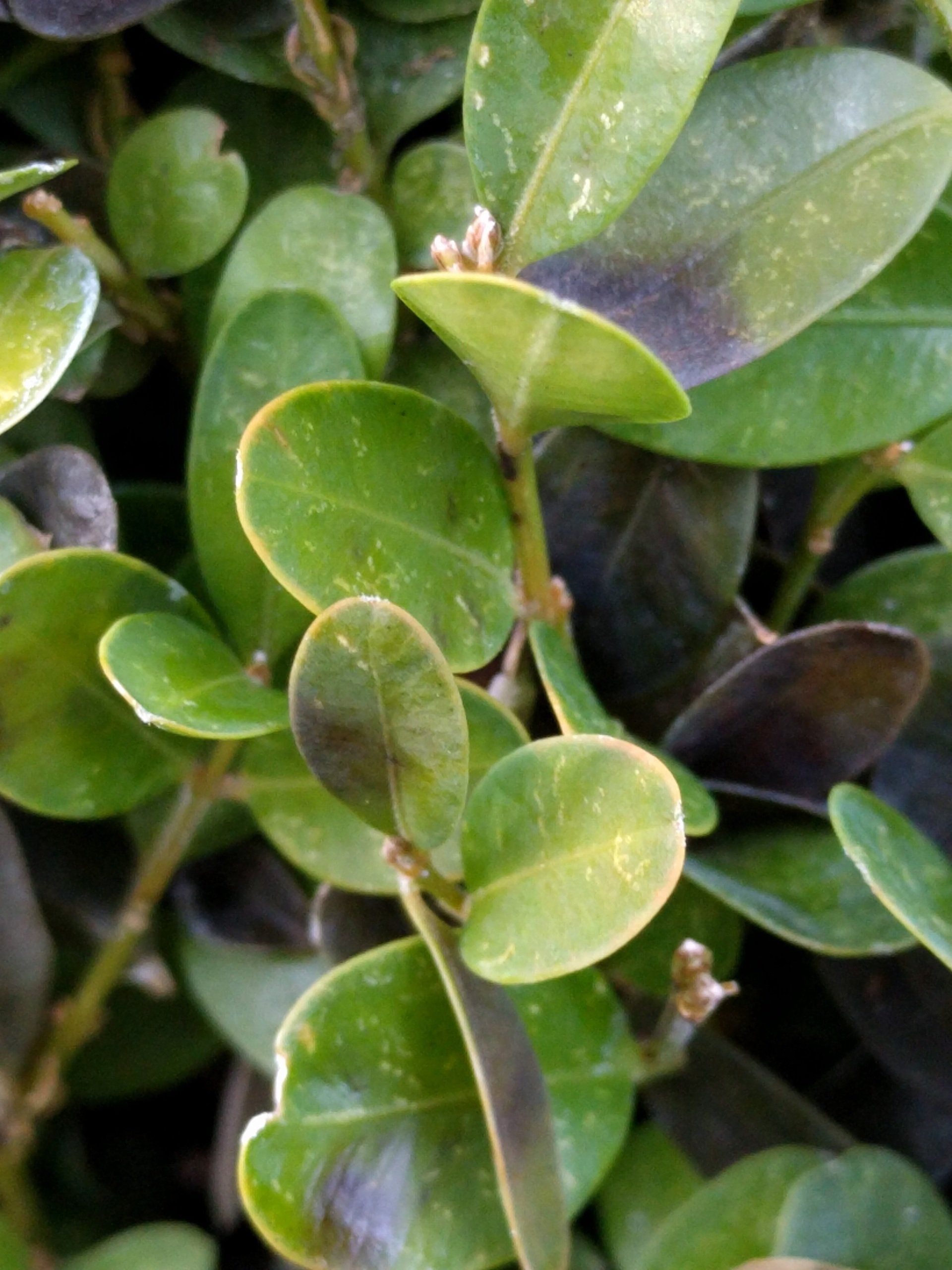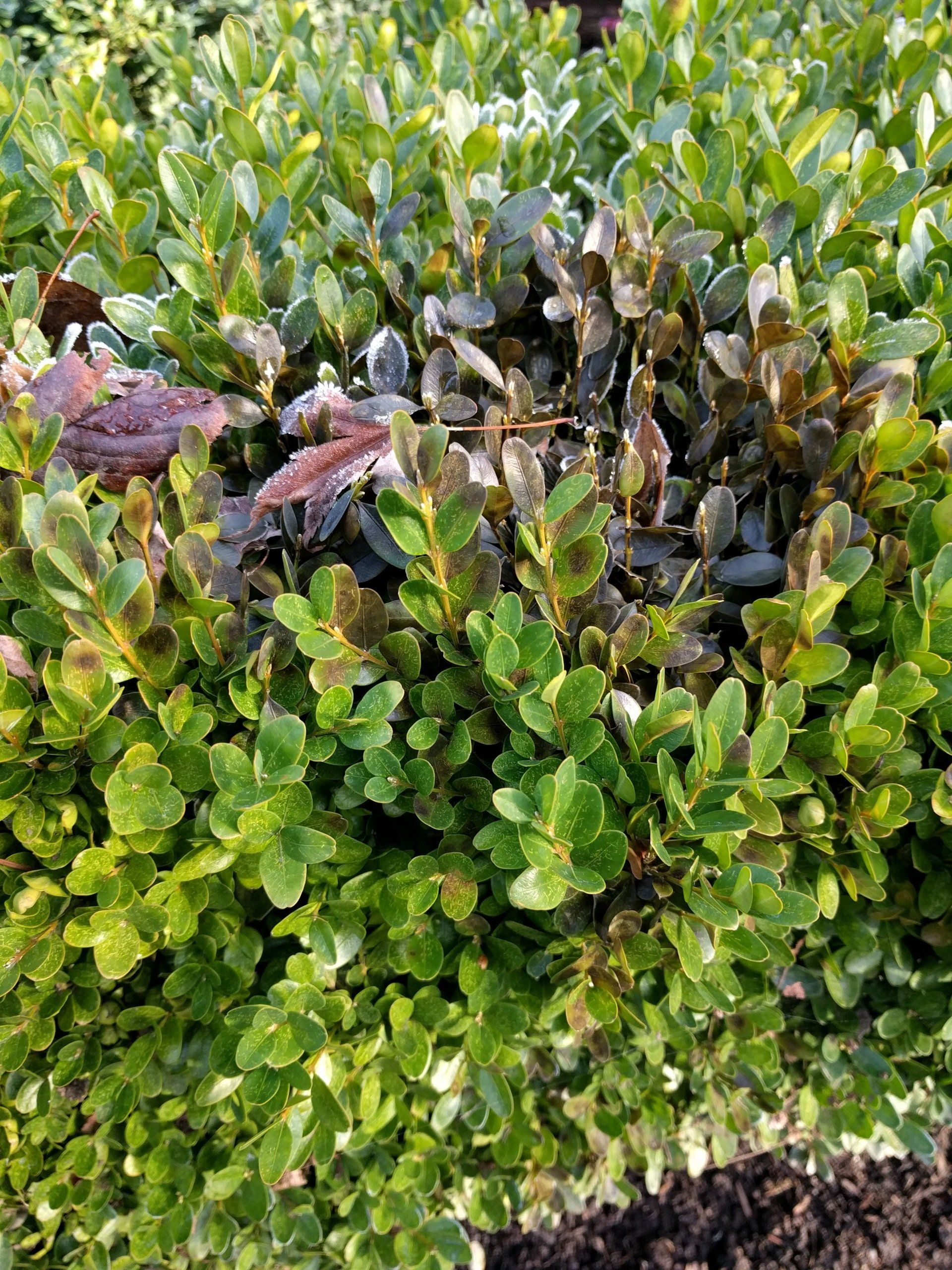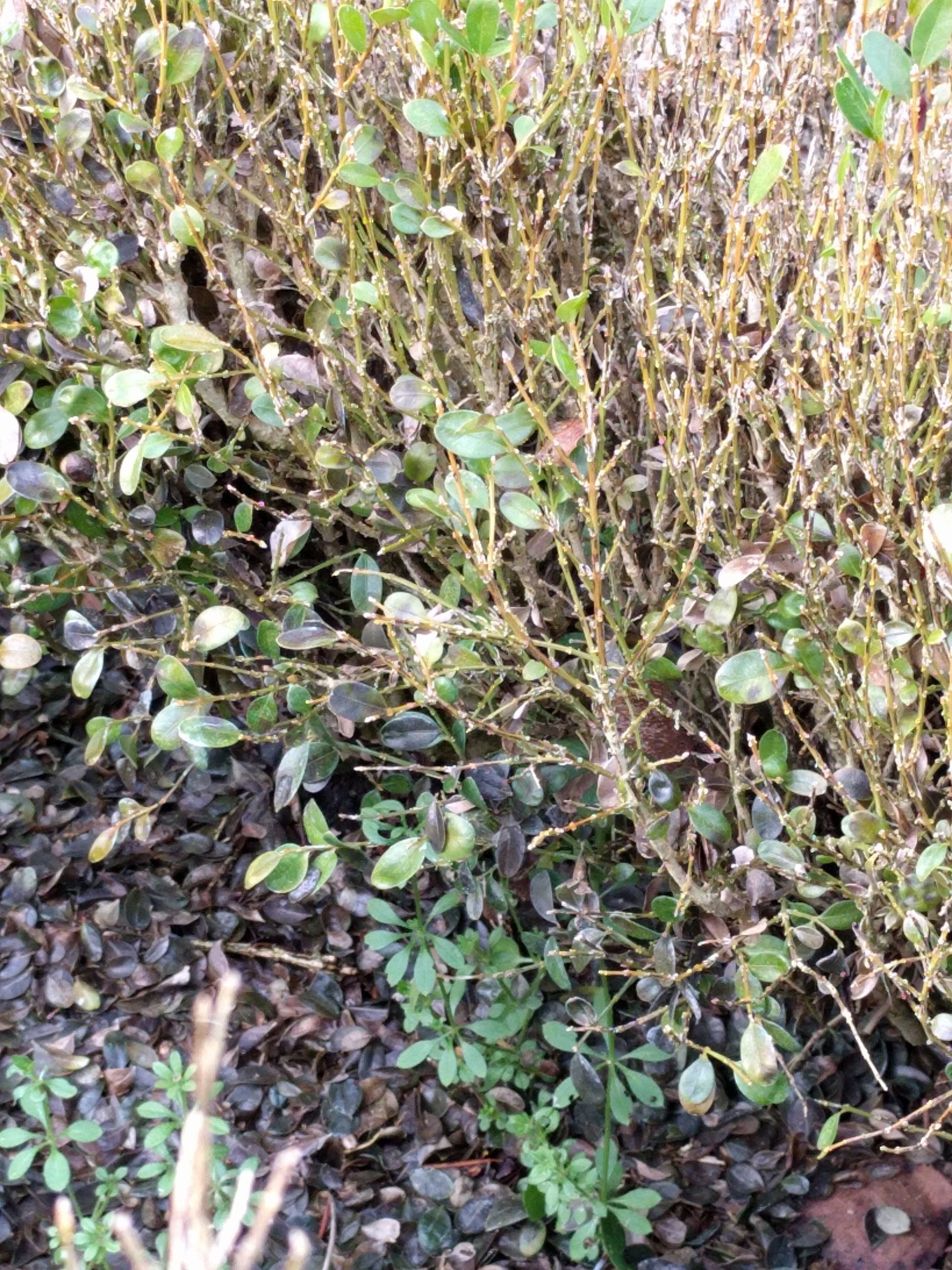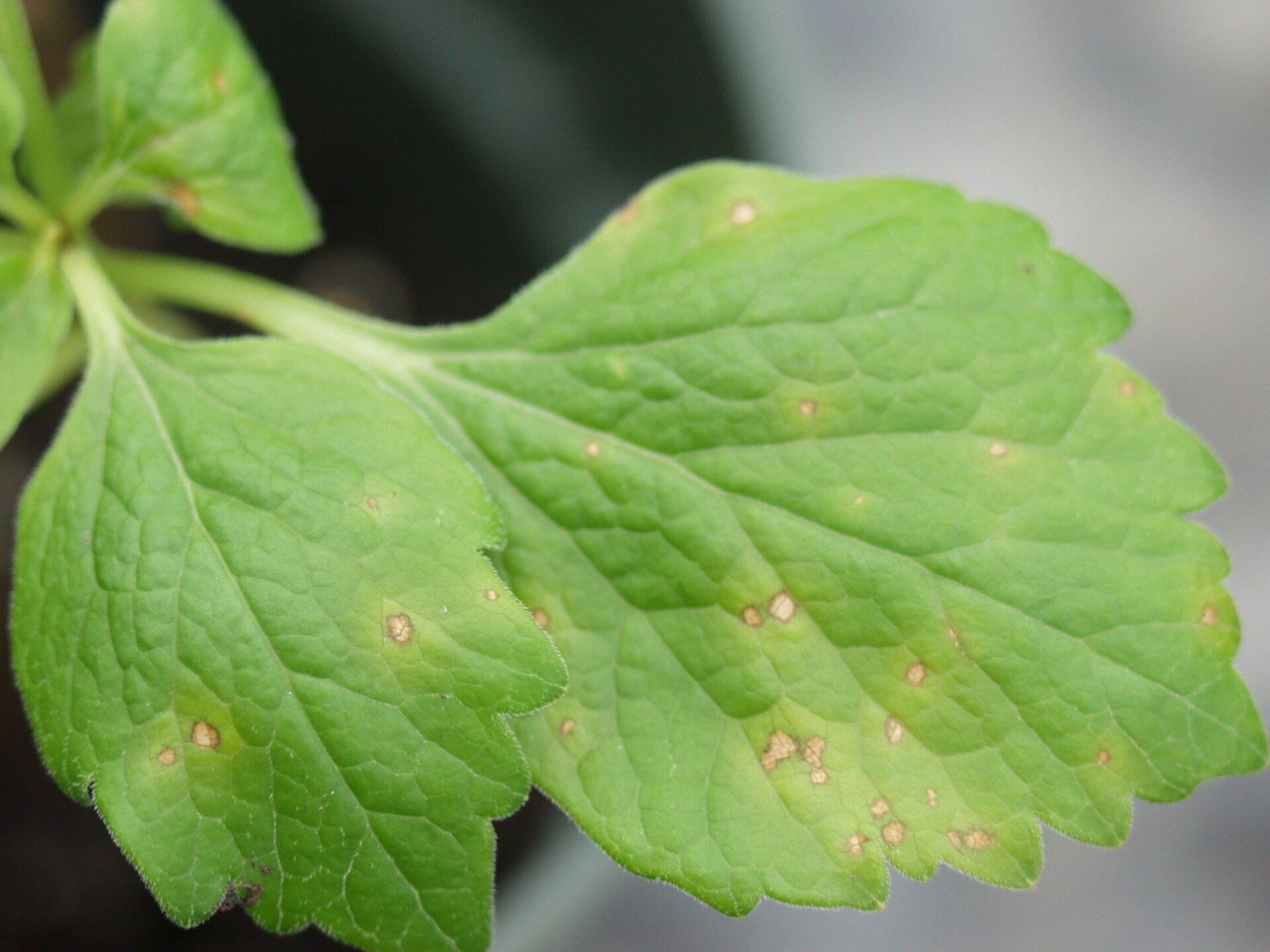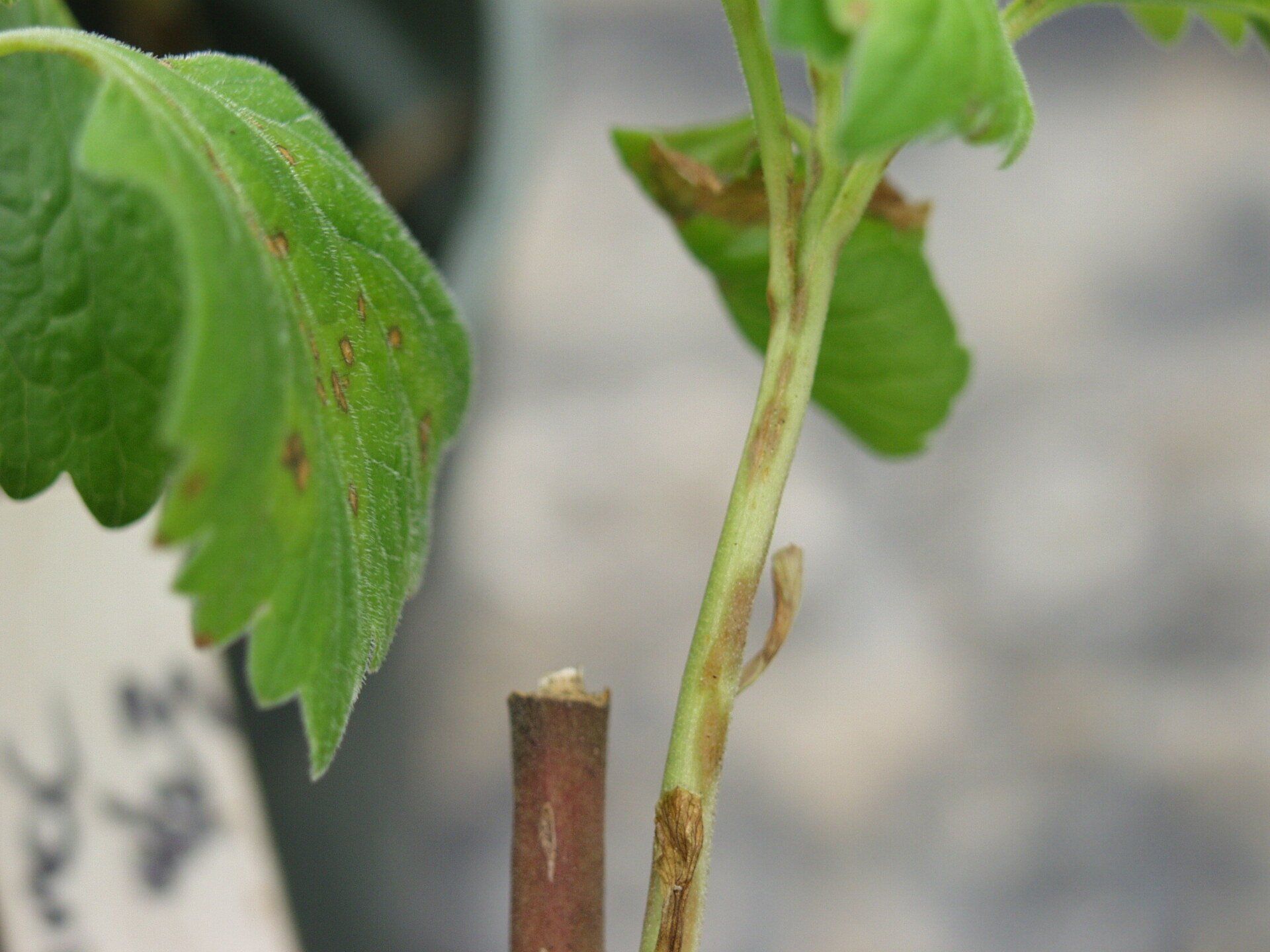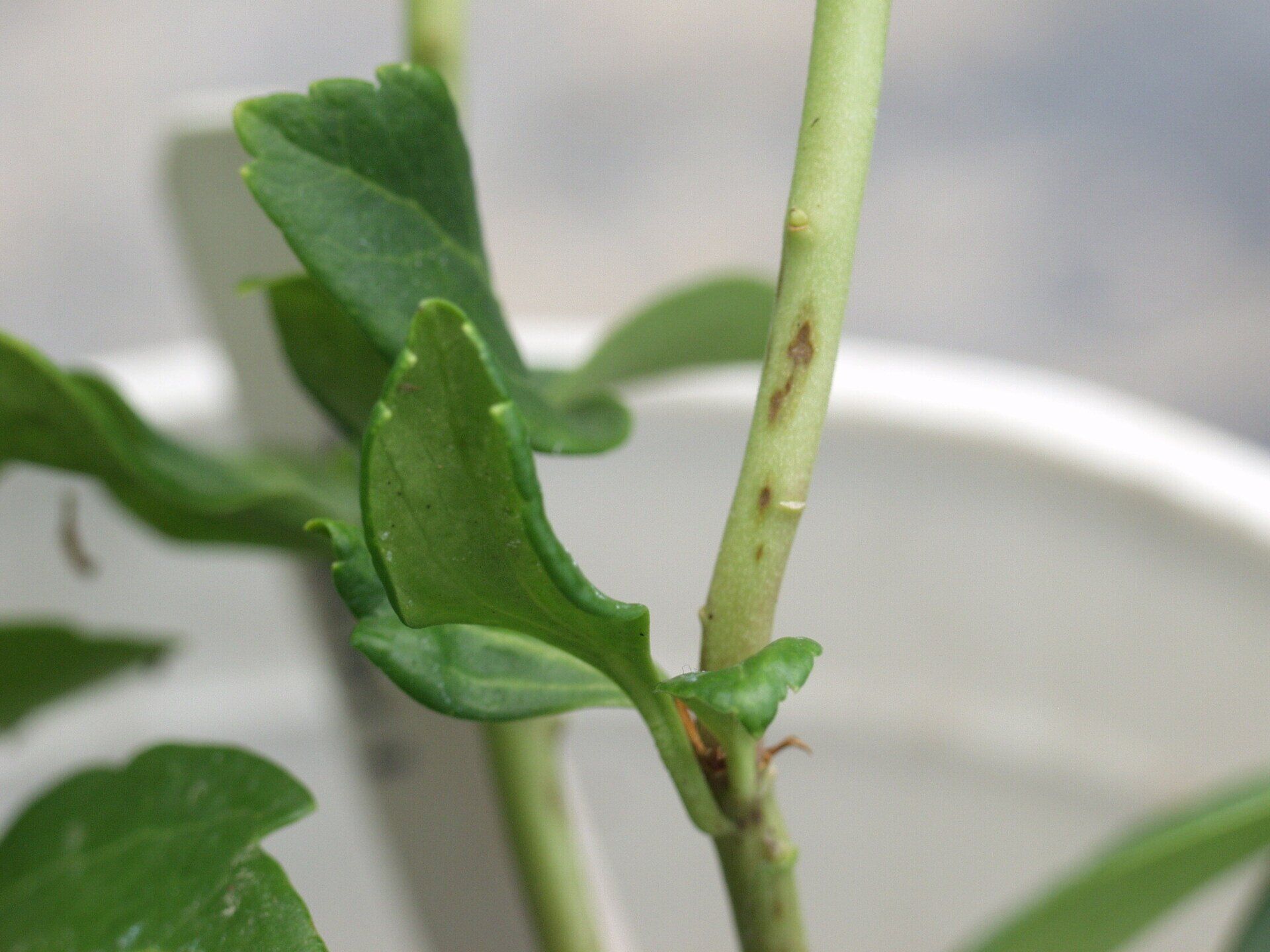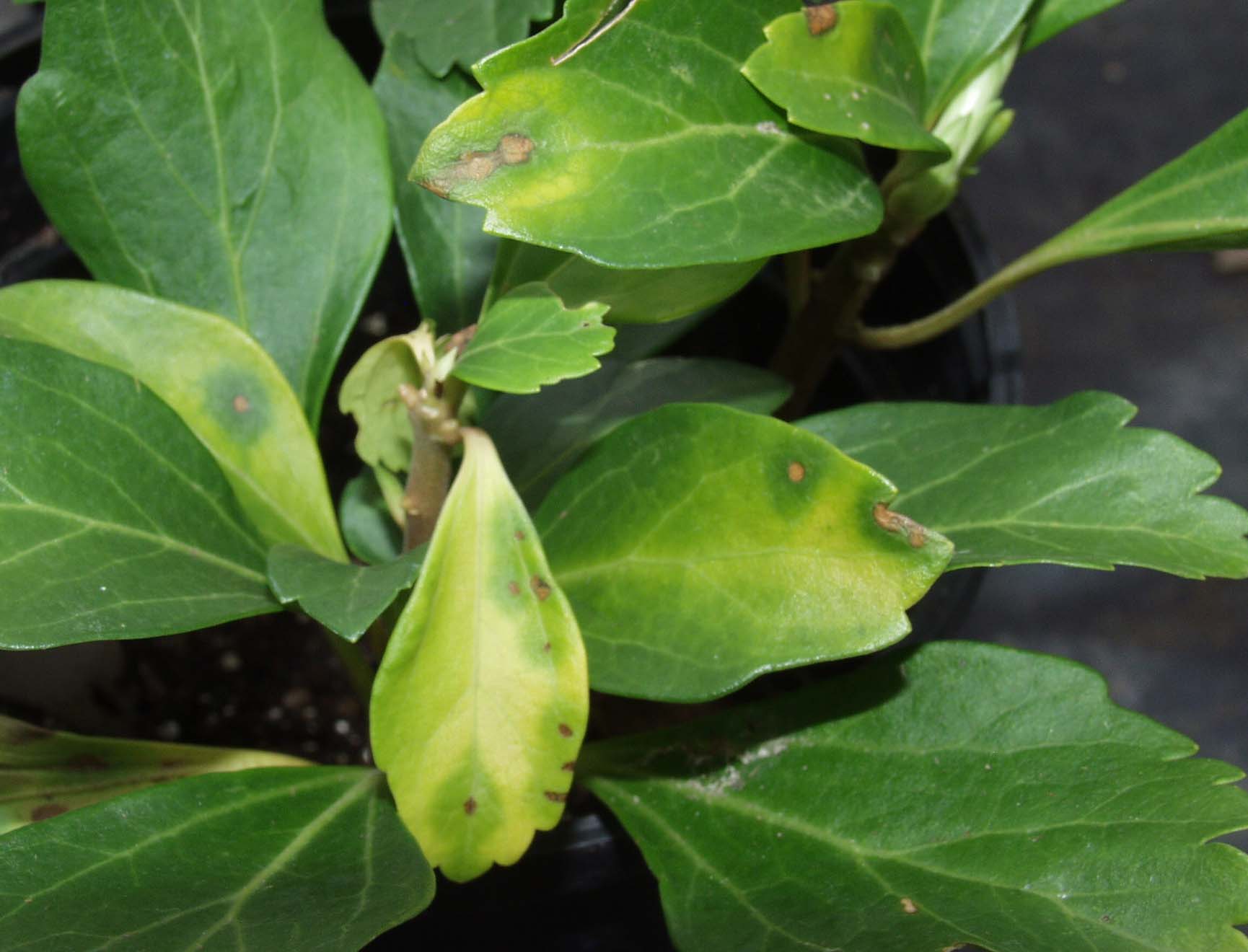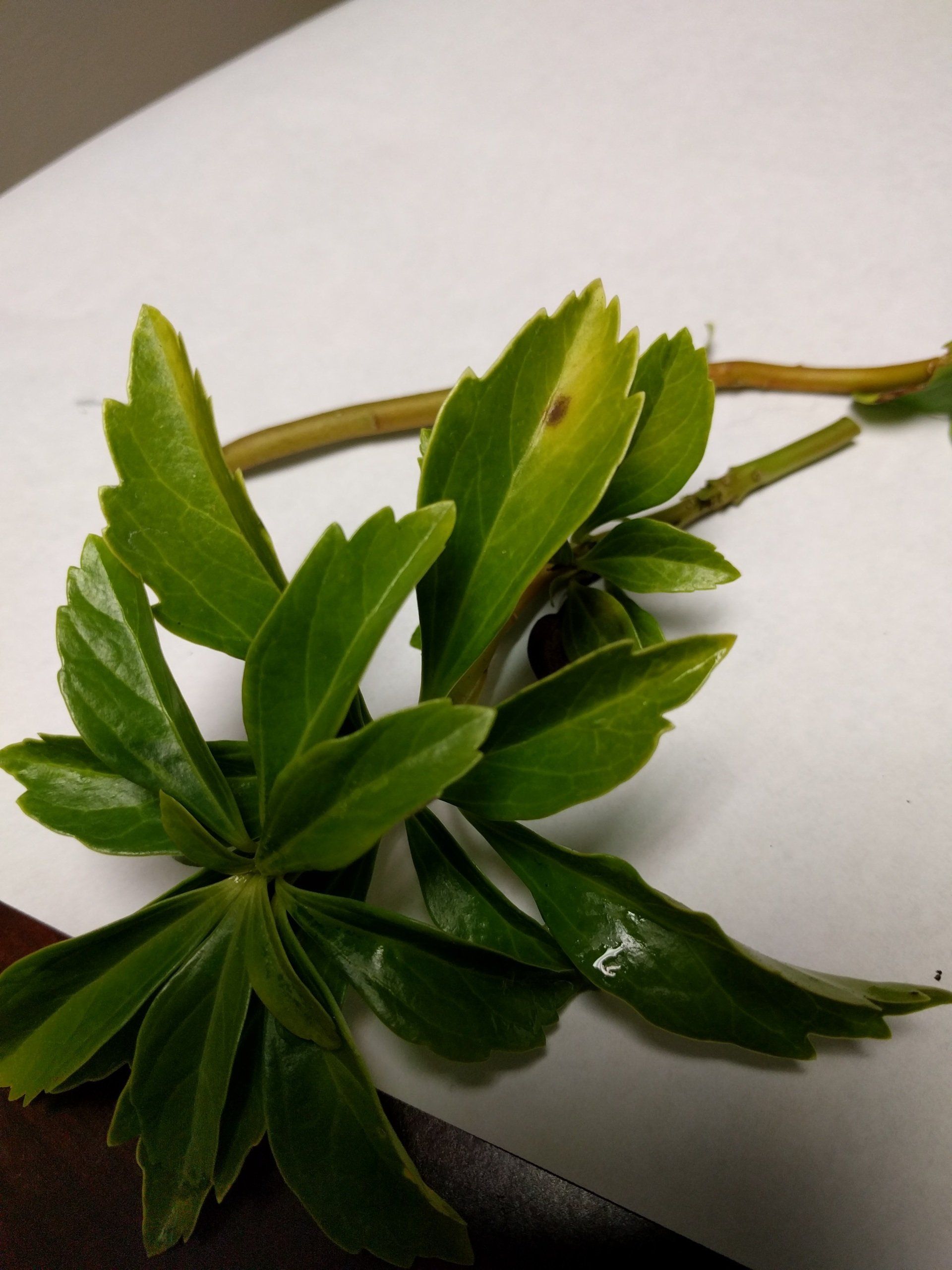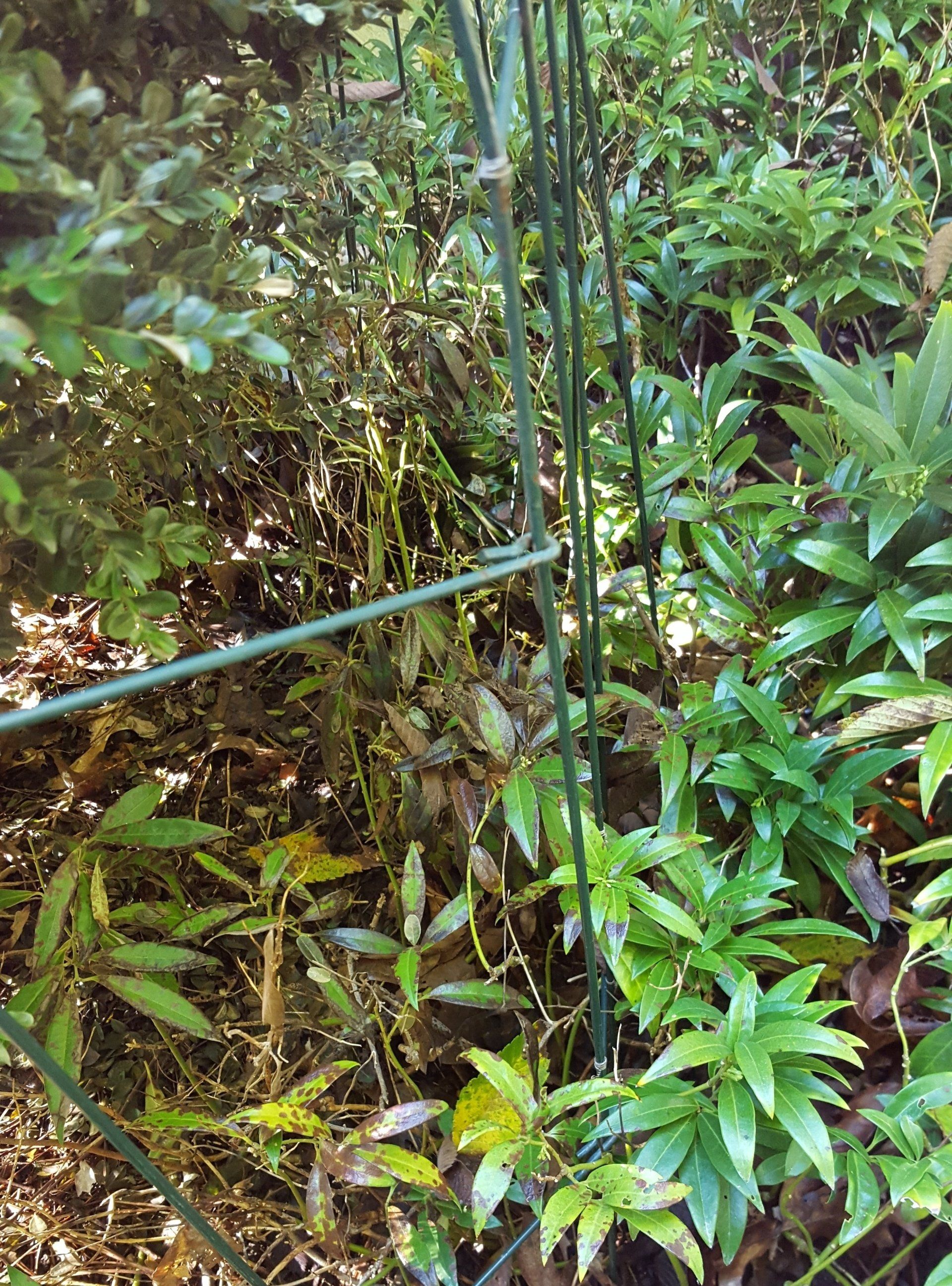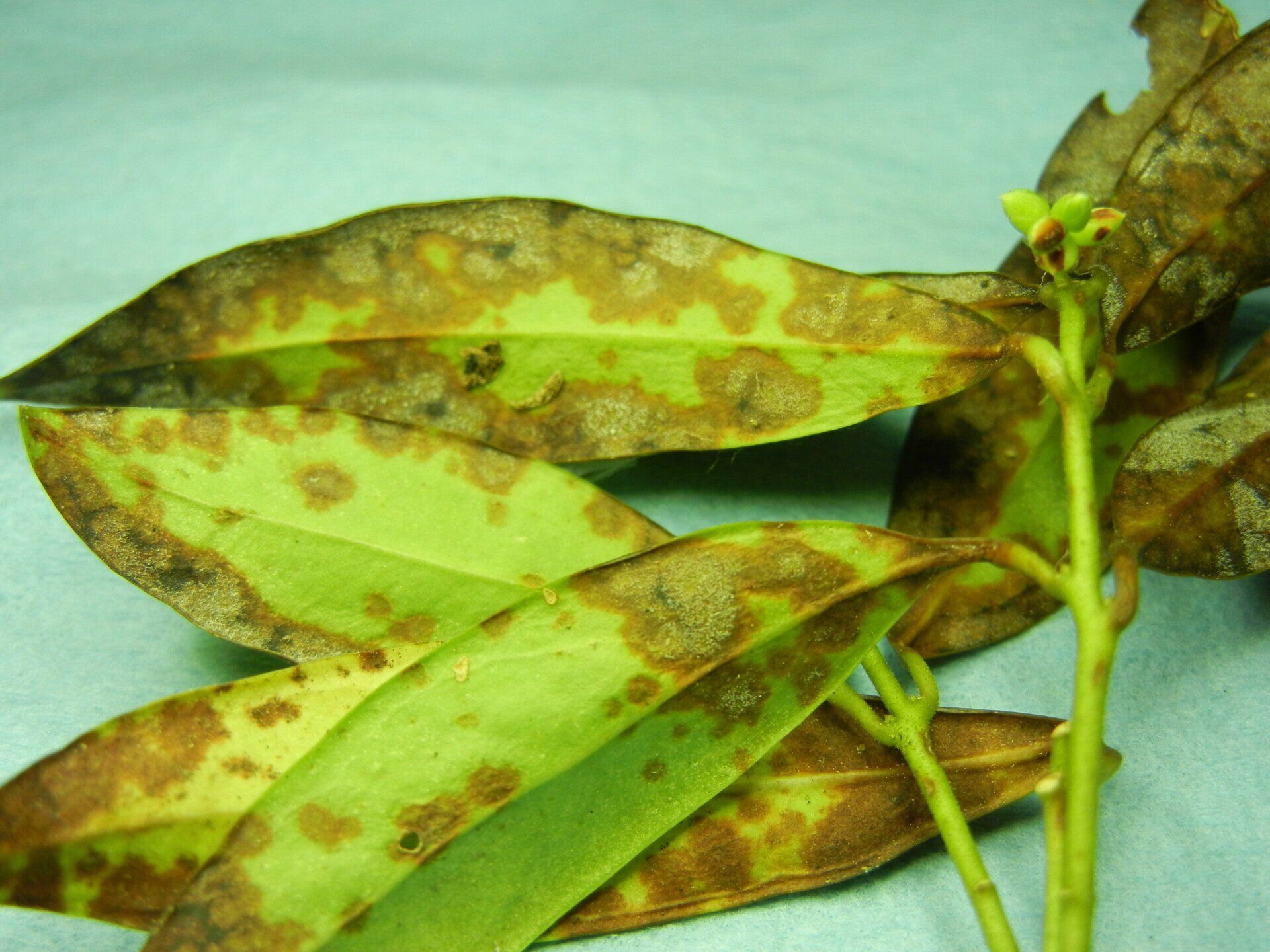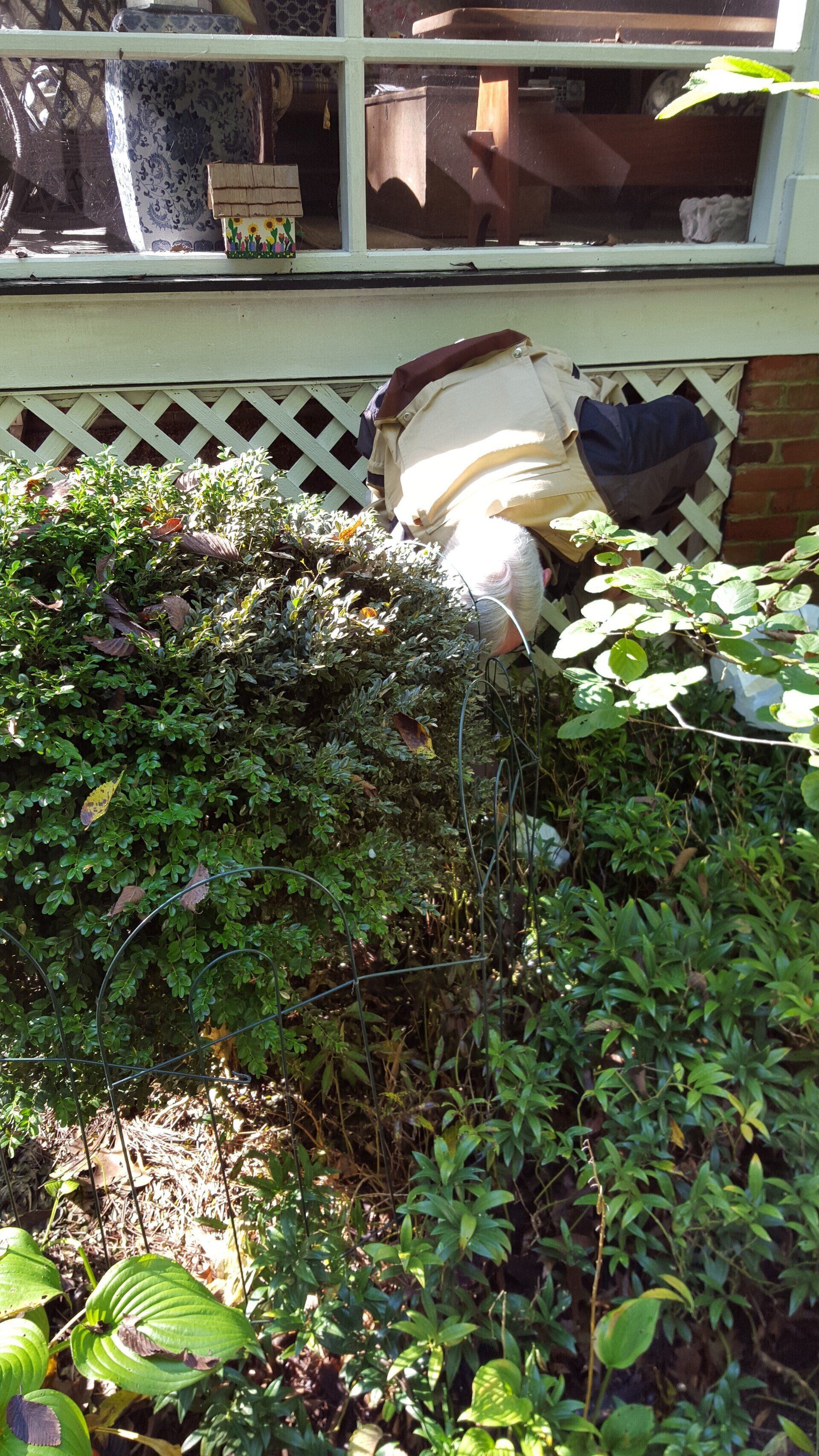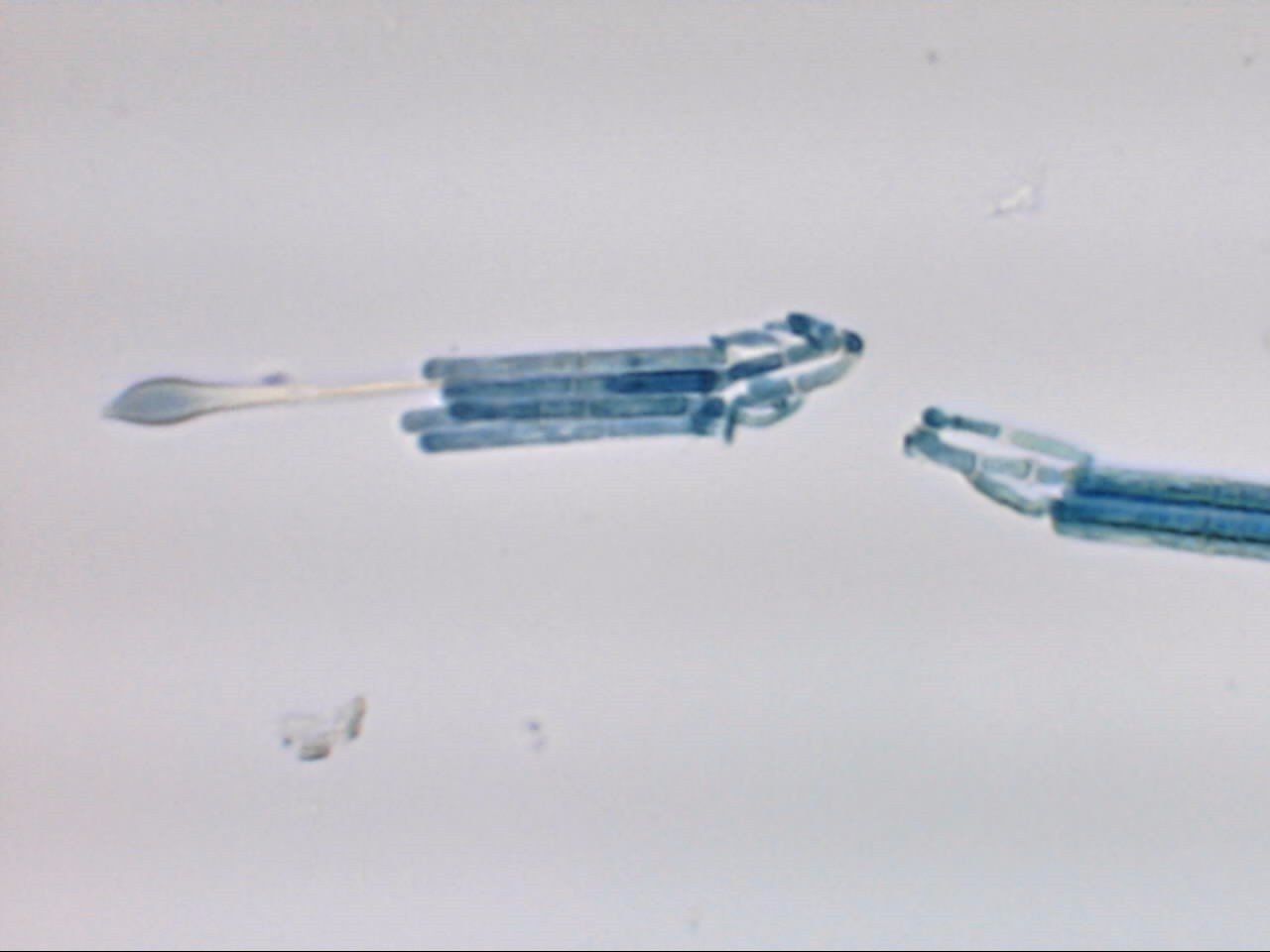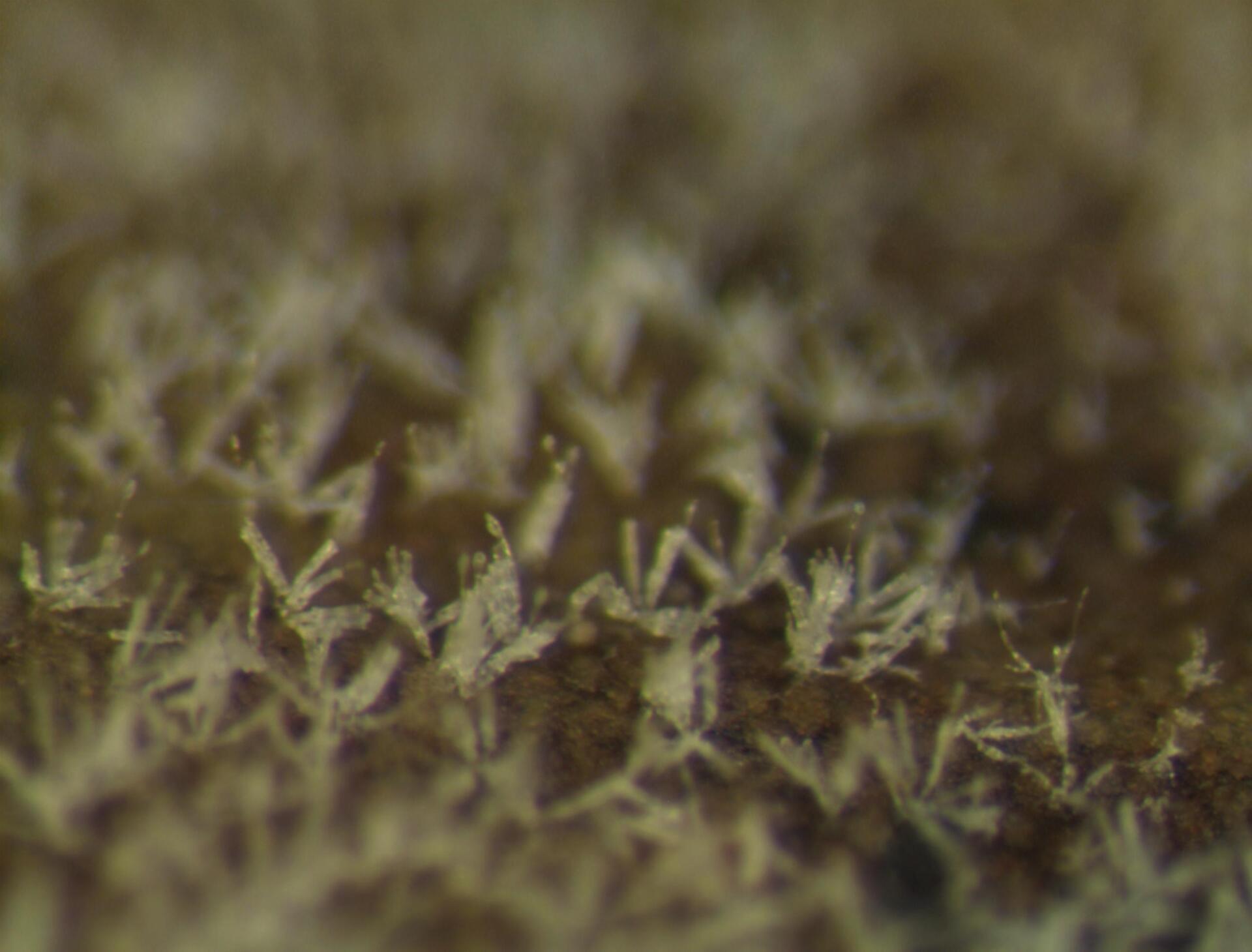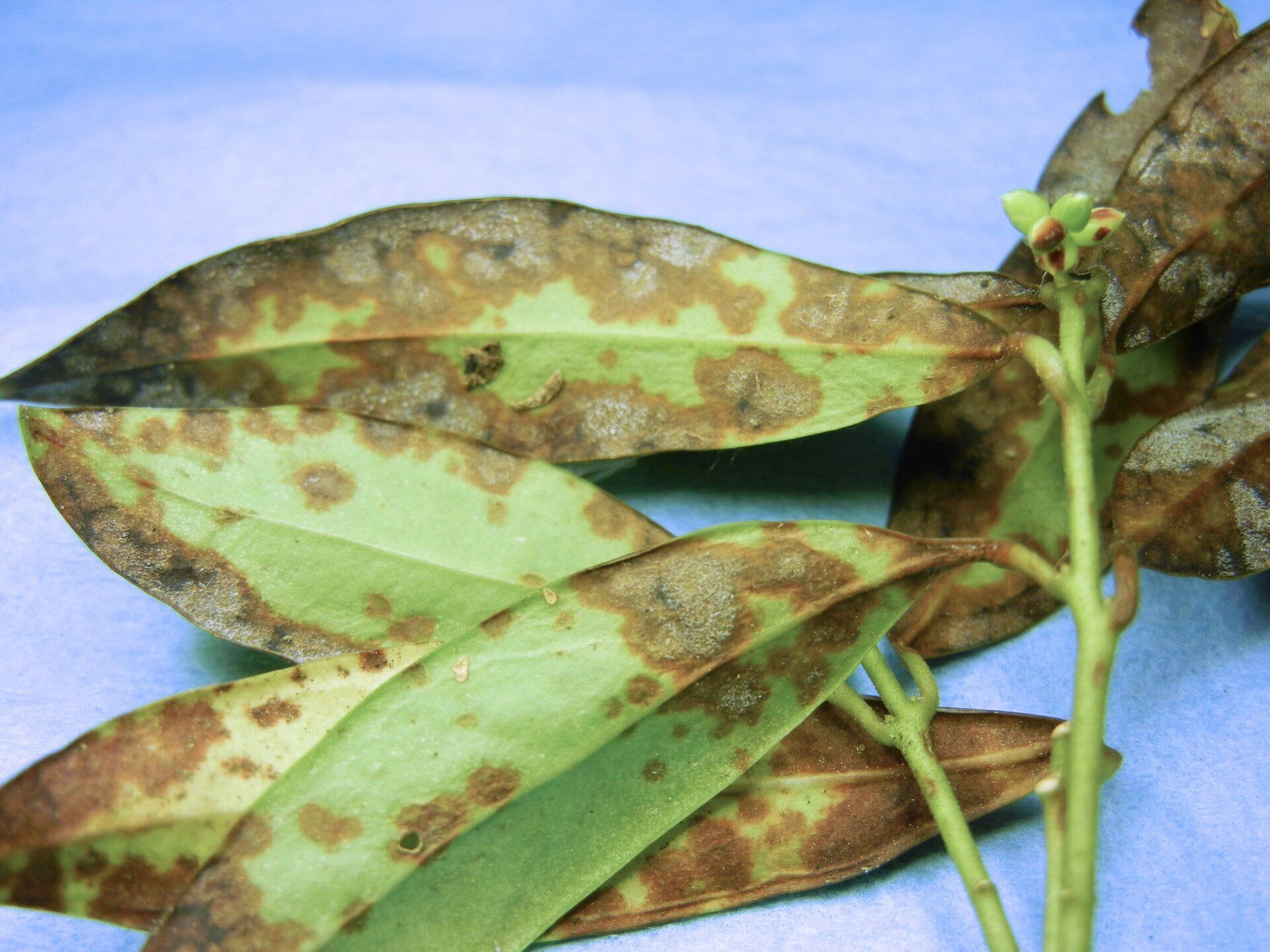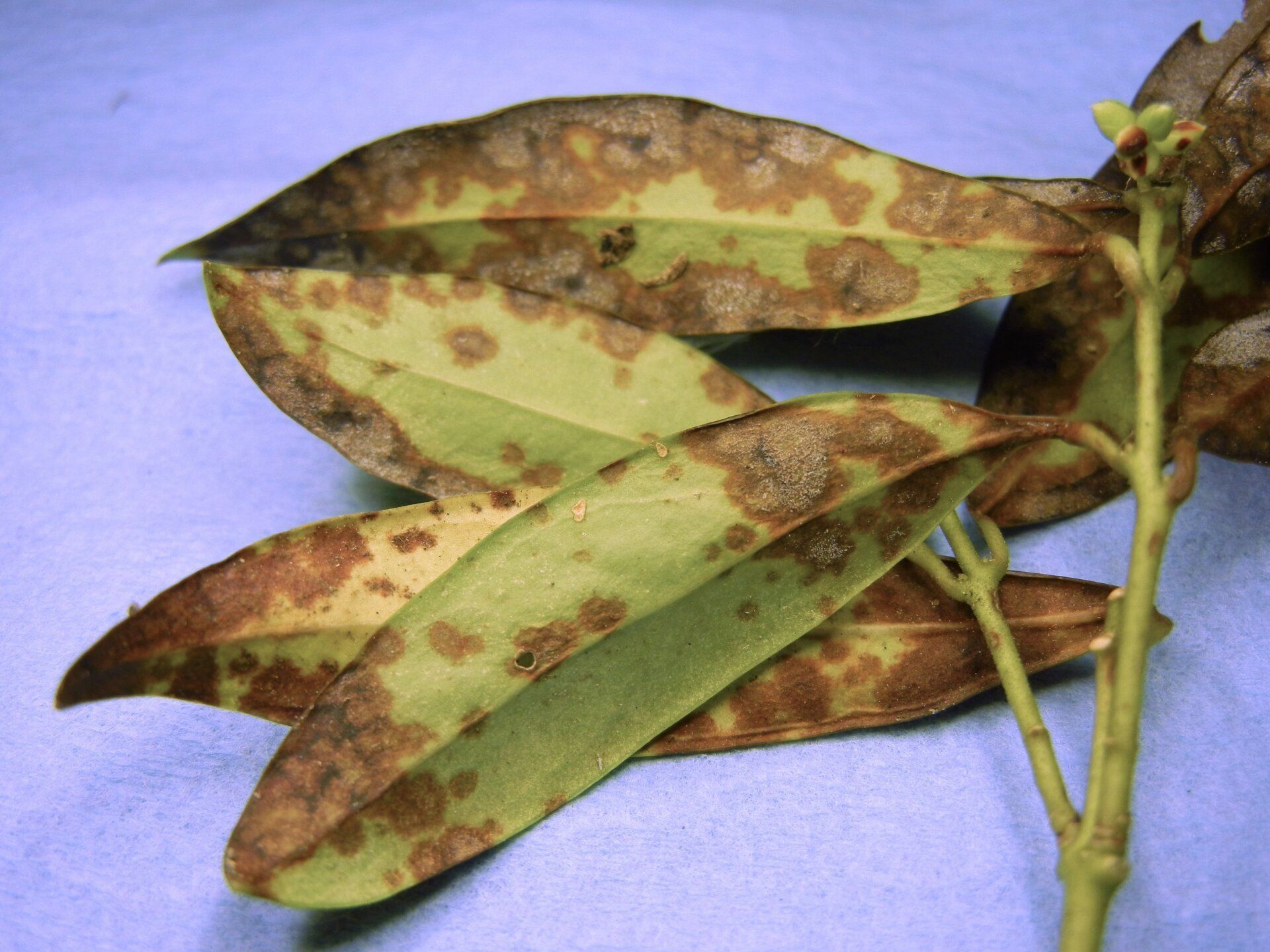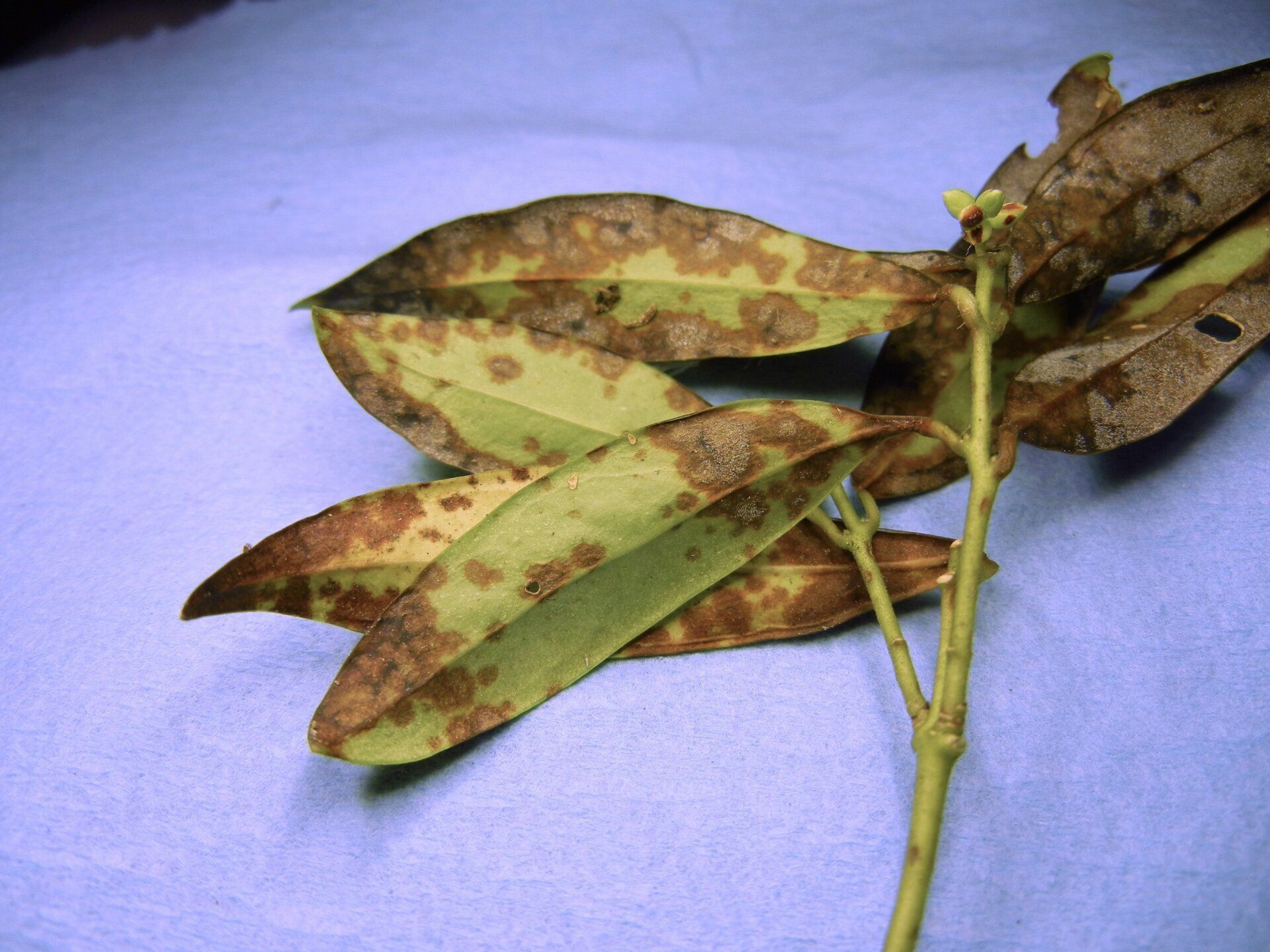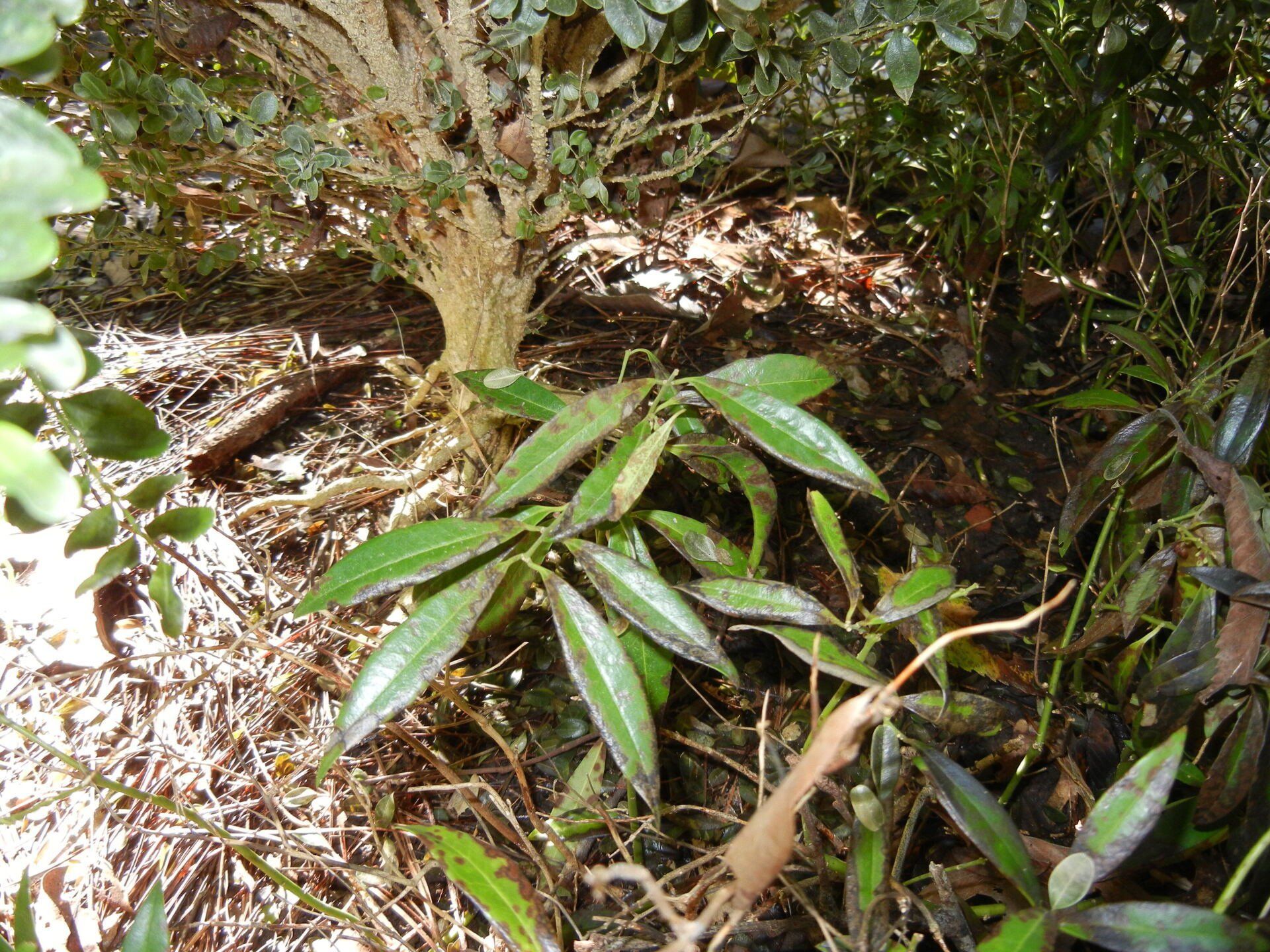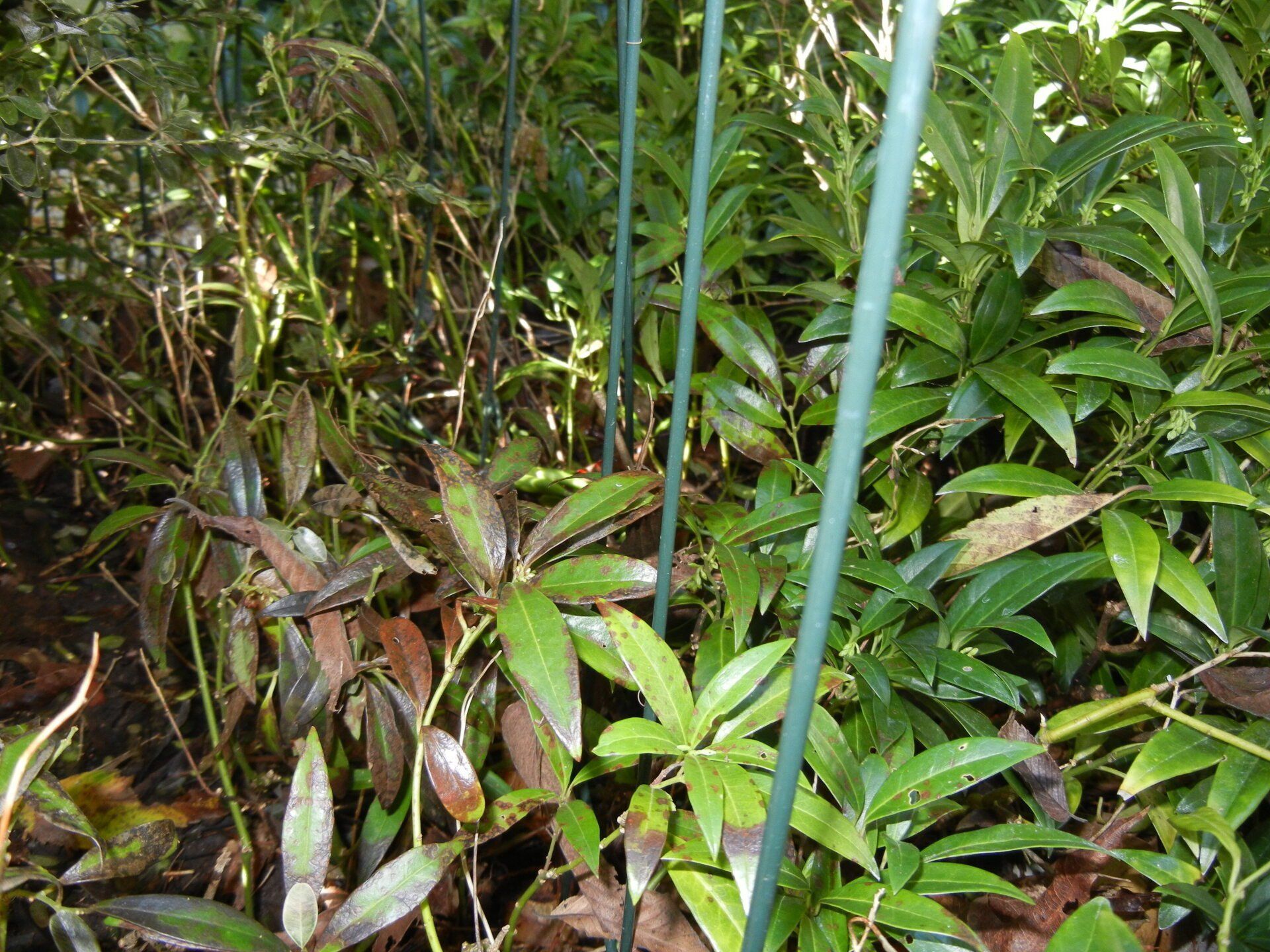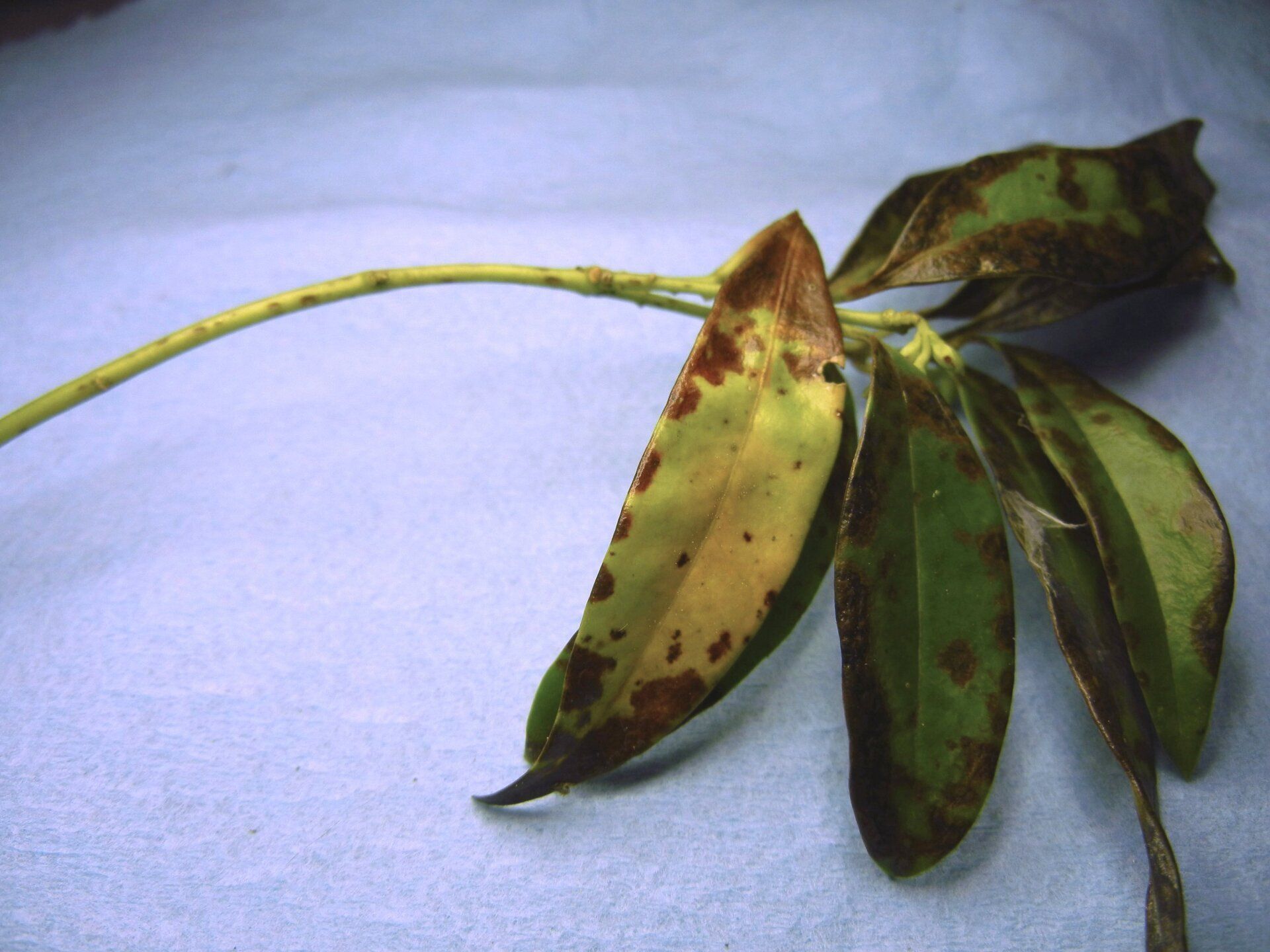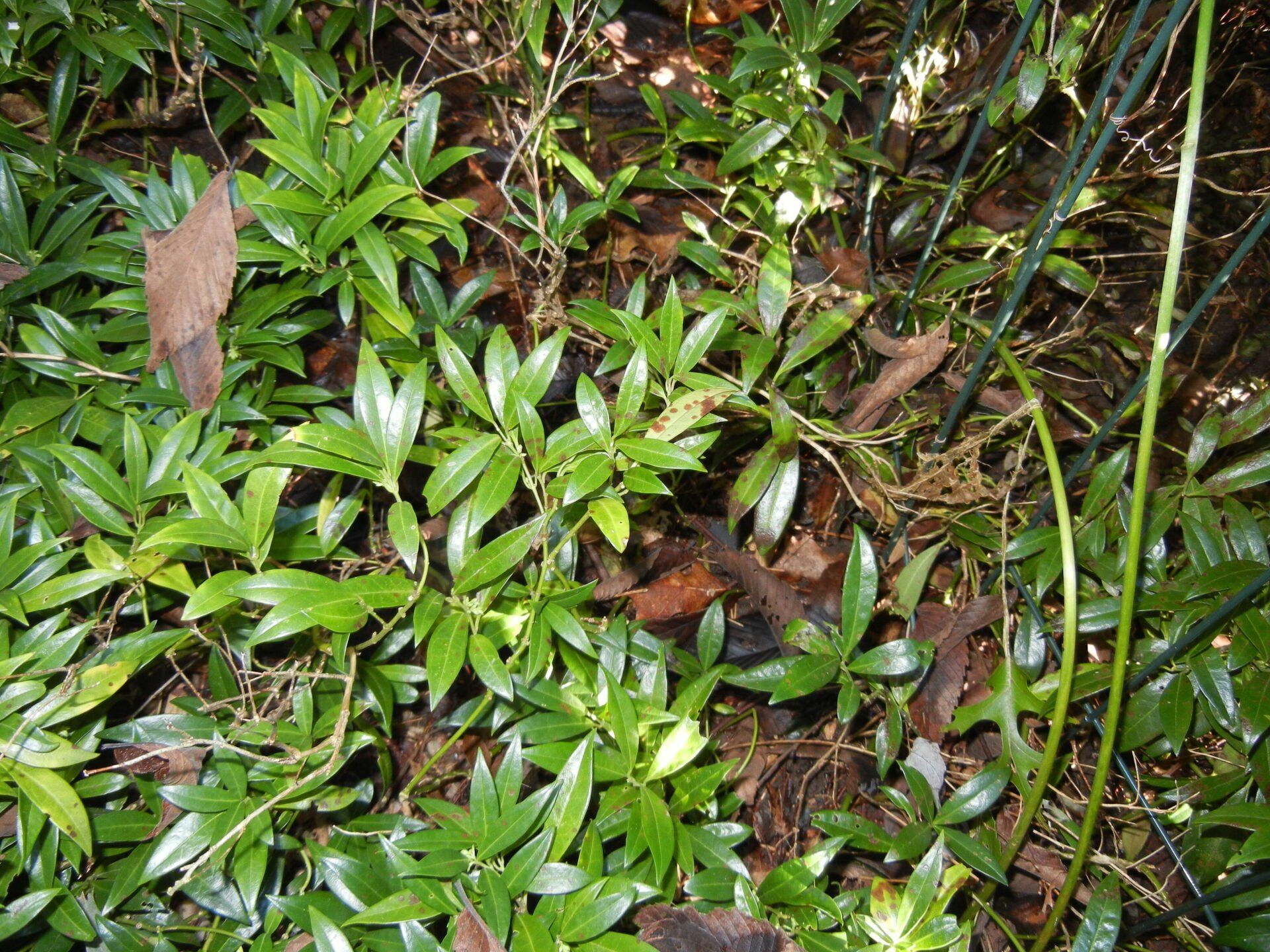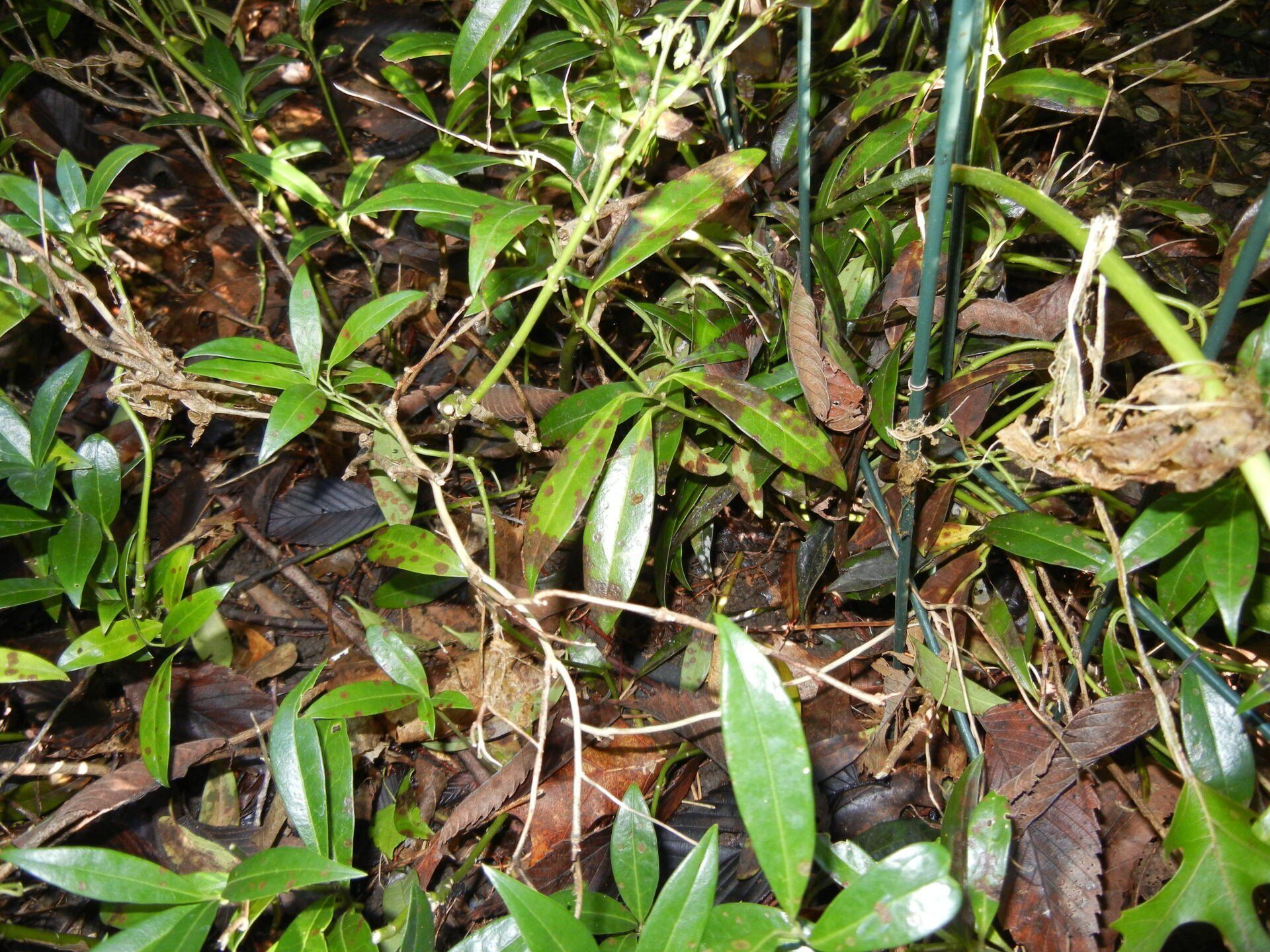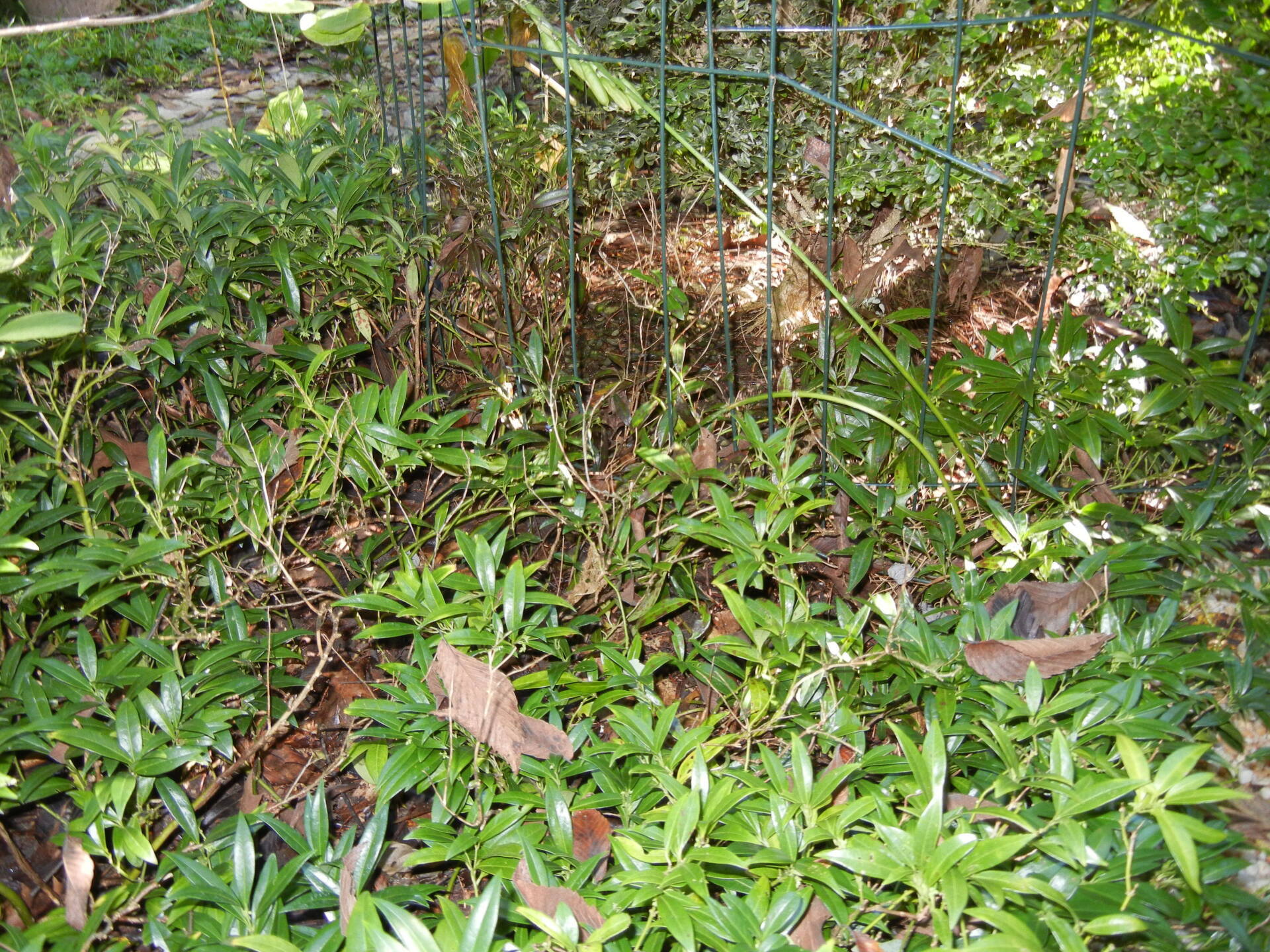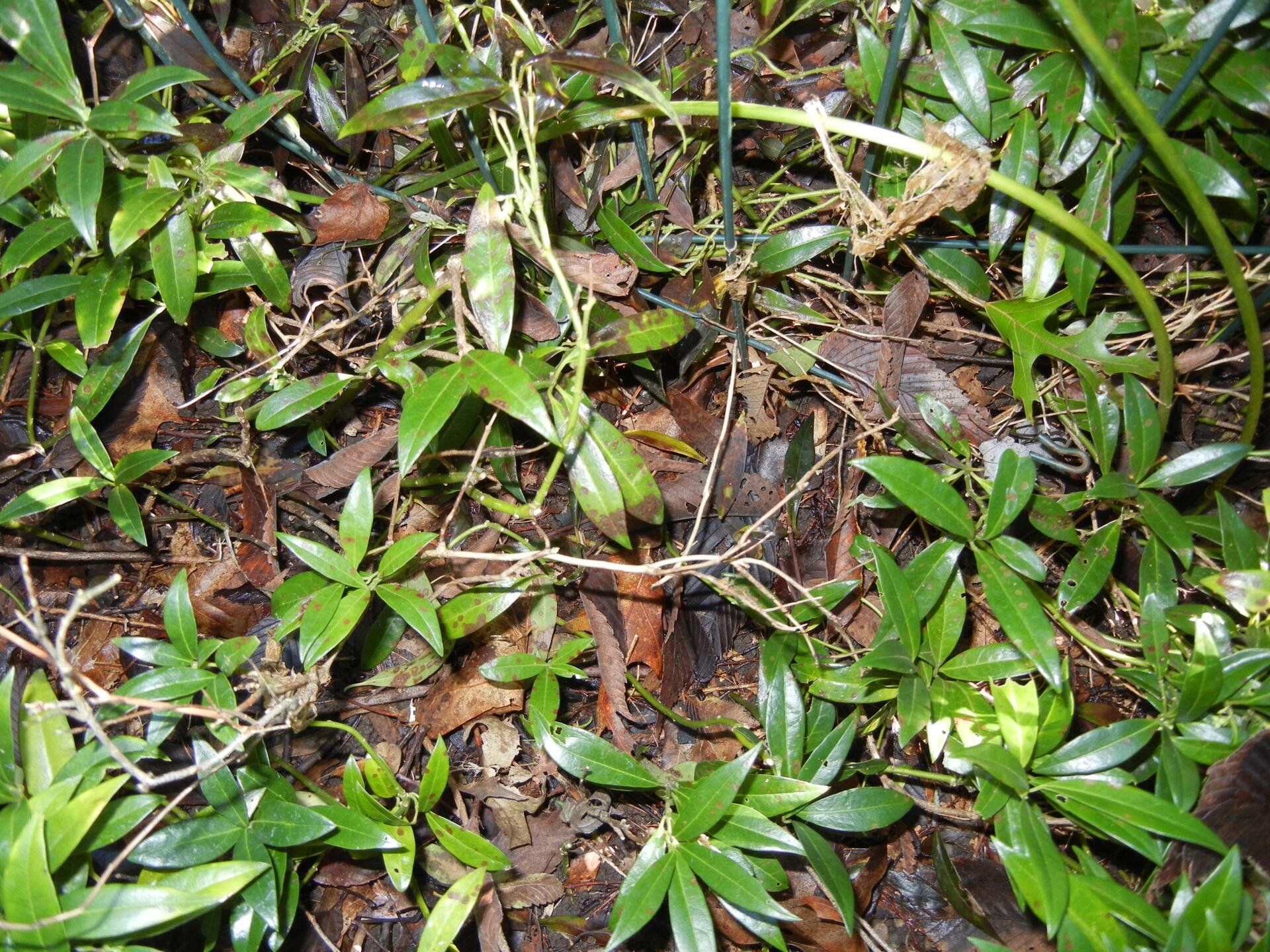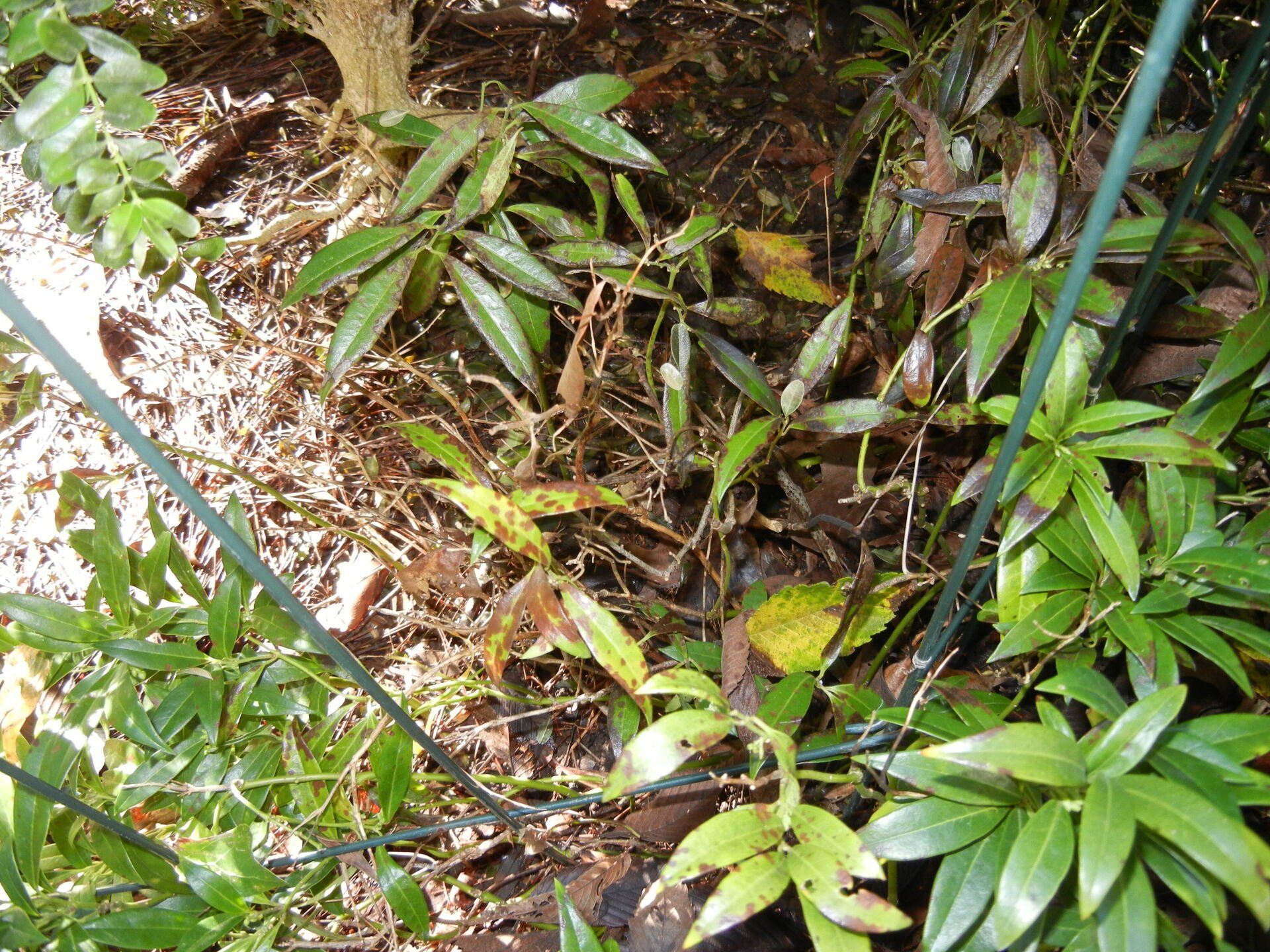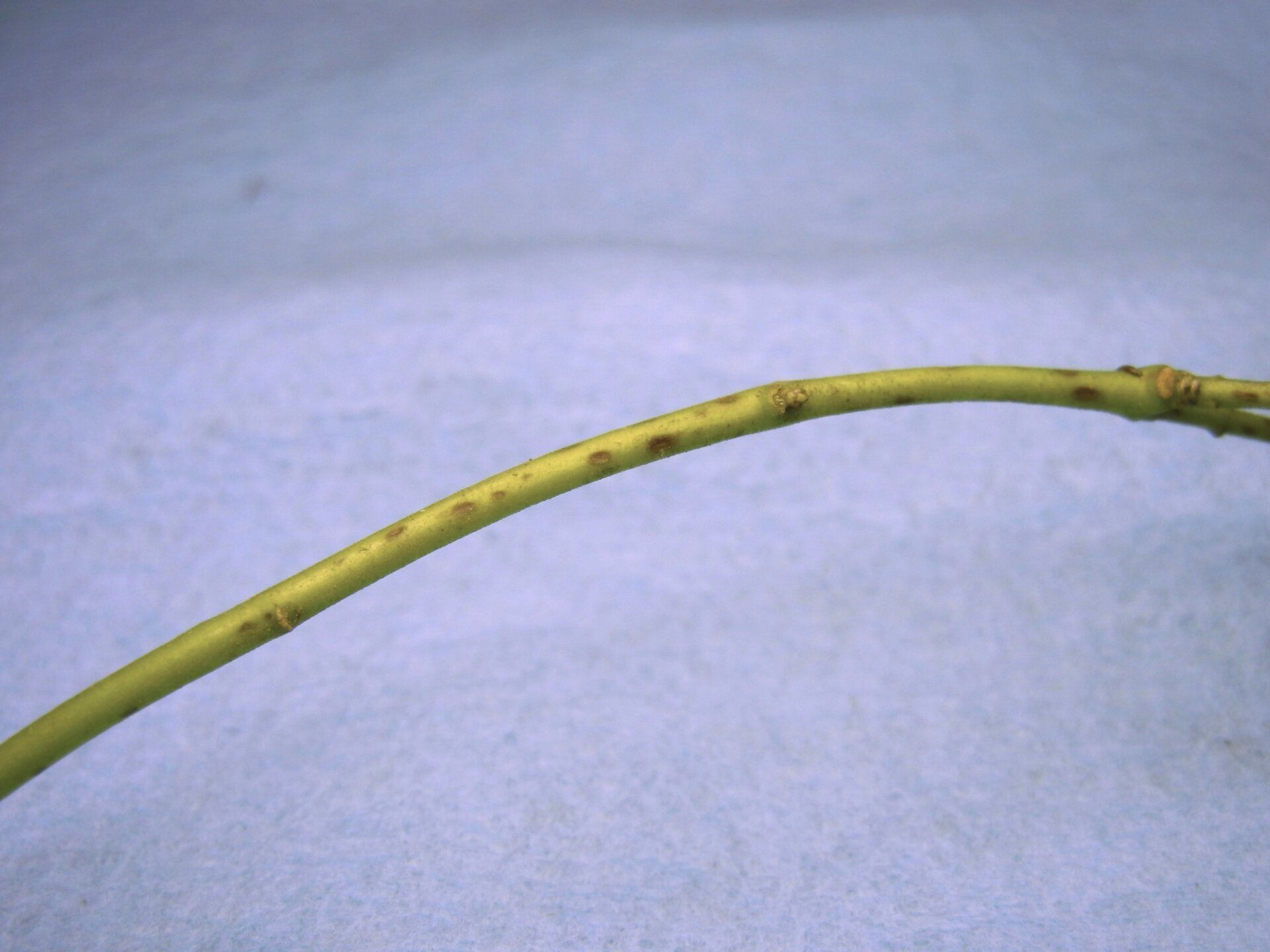Boxwood Gardening at Home
Growing healthy boxwood plants & avoiding boxwood diseases
What is Boxwood Blight?
This aggressive disease is more of a threat to boxwood performance in the landscape than any other disease of boxwood because it may destroy all the shoots and leaves of an infected plant. It can easily be confused with the more-familiar Volutella blight of boxwood, but boxwood blight strikes much more quickly and affects healthy rather than stressed or injured boxwood. Initial symptoms of boxwood blight appear on leaves as black, cloudy spots that lack a distinct edge; spots often enlarge to encompass the entire leaf, and then the leaf usually drops from the plant. Catastrophic leaf drop is often seen after a period of wet weather. Leaf spots vary from dark brown to black. There may also be tiny black cankers on young shoots, but these are usually black streaks rather than girdling cankers. Leaf blight is often seen across the tops of hedges but may also be seen on the top or sides of individual boxwood specimens. Whitish masses of spores appear on the underside of blighted leaves or on infected stems, and these are easily mistaken for Volutella blight, for which spores are white to pink. To further confuse the viewer, other fungi may sporulate on leaves killed by boxwood blight. Boxwood blight affects large areas of leaves quickly, whereas Volutella Blight most often foliage is killed on a single stem, slowly, following a wounding event such as snowload breakage.
To help you identify boxwood blight and other problems of garden boxwood, you may find the following pictorial guide helpful:
Knowing & Growing Boxwood
Grown for centuries, boxwood is not always well understood. Gardeners know of its reputation, but find it difficult to describe good growing practices. Professionals search for accurate and detailed information to make appropriate horticultural decisions. This introductory presentation hits the high points of box history, nomenclature, landscape use, physiology, pest & diseases, legend & lore, and in particular, horticulture.
Blight Symptoms
Learn if there is boxwood blight in your garden. Calonectria pseudonaviculata, the fungus causing boxwood blight, can infect boxwood, pachysandra (Japanese spurge, Allegheny spurge) and sweet box (Sarcococca). Below you will find images and diagnostic guides to help you determine if your plants are being affected. You may also want to seek help from a university plant disease diagnostic laboratory for a professional diagnosis.
Diagnostic Guides
Here are some highly detailed published diagnostic guides to help you diagnose if your plants may be affected.
A Diagnostic Guide for Volutella Blight Affecting Buxaceae
Yang, X., Castroagudin, V., Daughtrey, M., Loyd, A., Weiland, J., Shishkoff, N., Baysal-Gurel, F., Santamaria, L., Salgado-Salazer, C., LaMondia, J., Crouch, J., and Luster, D. 2021. Plant Health Progress. Published online at https://doi.org/10.1094/PHP-02-21-0052-DG
Boxwood blight disease: A diagnostic guide
Castroagudín, V., Yang, X., Daughtrey, M., Luster, D., Pscheidt, J., Weiland, J., and Crouch, J. 2020. Boxwood blight disease: A diagnostic guide. Plant Health Progress 21:291-300. https://doi.org/10.1094/PHP-06-20-0053-DG
Protecting Boxwood Plantings & Gardens from the Blight
Saving American Boxwood Gardens
Understanding the Current & Emerging Threats to Boxwood.
More Resources
Here are some links to additional resources that will help you to choose more disease-resistant boxwood and to grow this ornamental plant successfully. We hope that the material provided here will help you to better understand Boxwood Blight and what the scientific horticulture community is doing to combat this plant disease.
Ranking Resistance of Buxus Cultivars to Boxwood Blight
by Matthew Kramer , Yonghong Guo, and Margaret Pooler
American Boxwood Society Publications
A resource for guides, books and bulletin for all things boxwood












